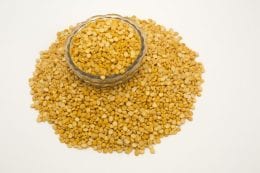
Photo: USDA ARS
Pasteurized shell eggs are available in some grocery stores. They are gently heated in the shell with a warm water bath at a controlled time and temperature to destroy potential bacteria inside the egg. It does not actually cook the egg. Another method is using radio frequency (RF) waves to heat the eggs. These are beneficial to reduce the risks of foodborne illness primarily from Salmonella.
Egg products are eggs removed from the shells, including whole eggs, whites, yolks, or egg blends that may have other non-egg ingredients. These are also pasteurized for safety as required by the USDA. The pasteurization process heats them rapidly but does not cook the eggs or affect the color, flavor, nutritional value, or use. Egg products have been around since the late 1800s with dried eggs. The first frozen whole egg product was made in 1903. Frozen egg substitutes were developed in 1973.
Dried eggs are also pasteurized then reconstituted with water when ready to use. Dried egg whites are a good substitute for recipes that call for raw egg whites that are not cooked.
All liquid egg products and reconstituted dried eggs must be refrigerated for safety.


